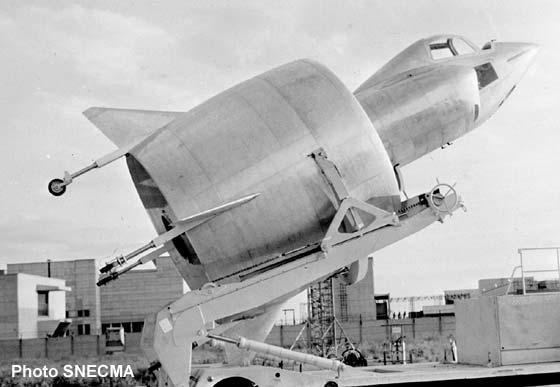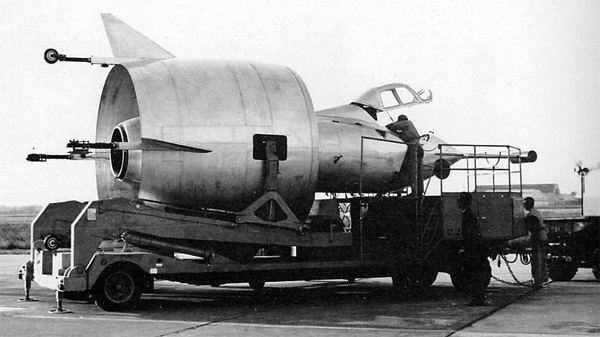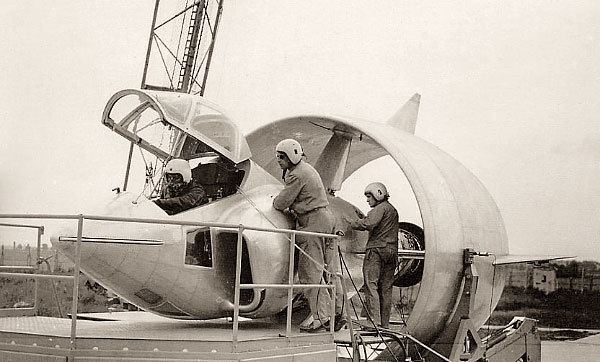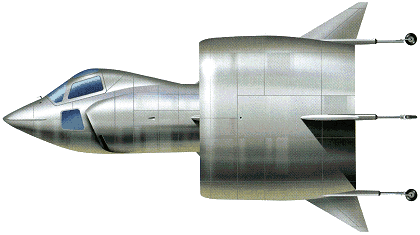Wingspan 4.51 m Designer Helmut Graf von Zborowski | Length 8.02 m First flight 1958 | |
 | ||
The SNECMA C.450 Coléoptère (meaning "beetle" in French, descended from Greek for "sheathed wing") was a VTOL aircraft developed by the French company SNECMA in the 1950s. It was a single-person aircraft with an annular wing designed to take-off and land vertically, therefore requiring no runway and very little space. The sole prototype was destroyed on its ninth flight.
Contents

Design and development

During the 1950s there were many attempts to design aircraft that could fly conventionally after a vertical take-off and then land vertically. As the thrust-to-weight ratio of turbojet engines increased sufficiently for a single engine be able to lift an aircraft, designers began to investigate ways of maintaining stability. Beginning in 1956, the French engine manufacturer SNECMA built a series of wingless test rigs called the Atar Volant, as precursors to a winged aircraft. Only the first of these was unpiloted and the second flew freely, both stabilized by gas jets on outrigger pipes. The third had a tilting seat to allow the pilot to sit upright when the fuselage was level and had the lateral air intakes planned for the free flying aircraft, though it always operated attached to a movable cradle. The pilot for these experiments was Auguste Morel.

The C.450 Coléoptère, built by Nord Aviation, had a central core like an Atar Volant, surrounded by an annular wing of the type investigated by Von Zhobowsky, carrying four triangular winglets. The pilot had an enclosed cockpit fitted with the tilting ejector seat, the engine intakes on either side. The Coléoptère stood on an undercarriage of four small wheels.

The Coléoptère first left the ground, on a gantry, in December 1958, with Morel again in the cockpit. After this he made eight successful flights up to a maximum of 800 m (2,625 ft). The ninth flight, on 25 July 1959, was planned to make limited moves towards the horizontal but with insufficient instrumentation and a lack of visual benchmarks the aircraft became too inclined and too slow to maintain altitude. Morel was unable to regain control and escaped with an ejection at 150 m (492 ft). He survived but was badly injured; the aircraft was destroyed and a planned second prototype did not receive funding.
Specifications
Data from Gaillard (1990)
General characteristics


